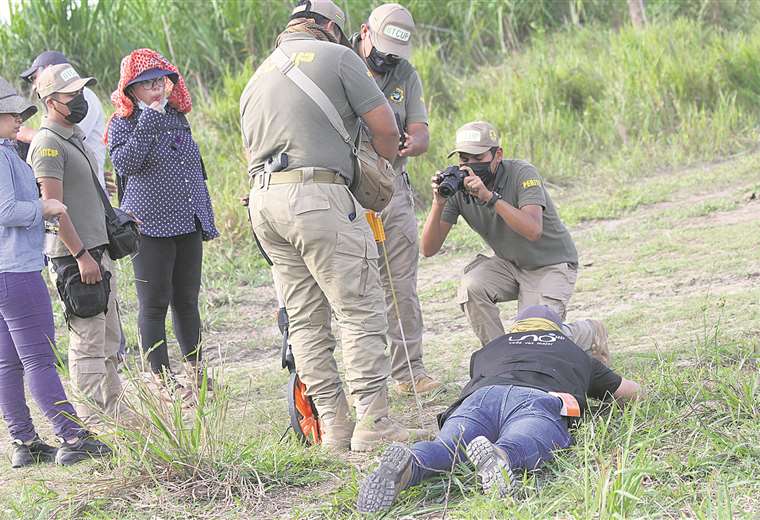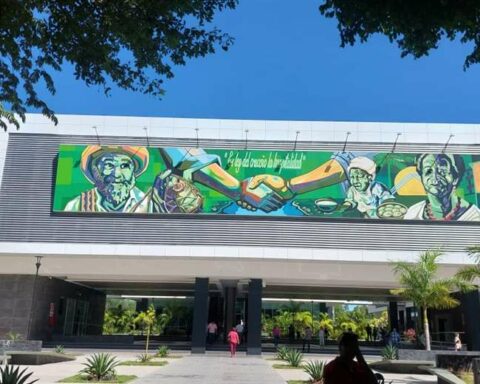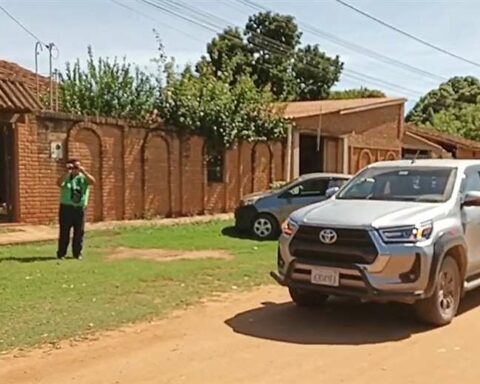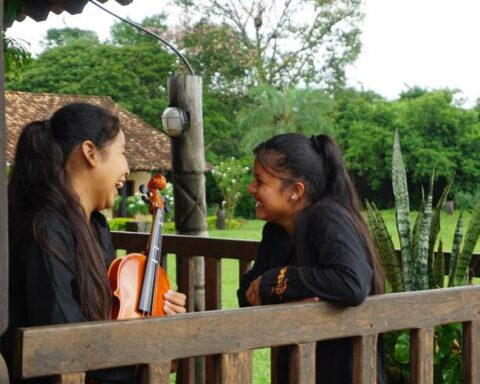July 17, 2022, 10:51 AM
July 17, 2022, 10:51 AM
Three workers reduced and taken as hostages and the warning to burn the agricultural machinery if they resisted contextualize the illegal takeover of Monte Sion JC, a private cattle ranch, located in Ascensión, capital of the Guarayos province. This new attack highlights the lack of legal security in that area of the department of Santa Cruz, which has become a breeding ground for the illegal appropriation of productive land, according to and according to sectors, carried out by supporters of the ruling party and coming from the West. from the country.
Cristiano Joner, owner of the affected property, reported that the ‘tomatierra’ have taken possession, for now, of 5 to 10 hectares of a paddock with cultivated grass, truncating the income of cattle.
“They have threatened us with preventing the soybean harvest. We live in a state of defenselessness and uncertainty because they have set up surveillance day and night. They are very aggressive people who are not from the area. It seems that they bring it from other regions of the interior of the country with the purpose of invading productive farms by force, ”he said.
From the Guarayos Cattlemen’s Association (Agagua), President Rómulo Fernando Paz Ortiz, indicated that Monte Sion is one of the 15 farms taken over in recent months by groups of people arriving from the interior of the country.
According to the leader, the situation in the Guarayos province is very worrying due to the outrage and disrespect for the law. He expressed that the crime of taking land has rebounded “very strongly” in recent months, for which they ask the authorities to guarantee the legal security of the land and enforce the current agrarian and legal regulations. “Investments in private properties are at risk, as well as food security, because uncertainty discourages and conditions food production,” he pointed out.
Paz considers that the proven high productivity of the land and surplus value attract invaders of productive properties.
According to the president of the Federation of Ranchers of Santa Cruz (Fegasacruz), Adrián Castedo, the organization has recorded 22 illegal seizures of land in recent months, with Guarayos and San José de Chiquitos, municipalities with a high agricultural and livestock vocation, being the most vulnerable. of this illicit that, in the case of the Guaraya land, he said that it is a very serious problem.
“In recent weeks, properties have been invaded, with hostage taking -in Monte Sion in Cerro Chico in Ascensión de Guarayos-. We are concerned about insecurity, that people enter the farms without any documentation and intimidate the producers. We see a lot of slowness in this, but we trust that a shortcut will soon be put in place with eviction to these illegal occupations in Guarayos, in San José de Chiquitos and fiscal areas in the Velasco province”, Castedo mentioned, insinuating that the adverse effect of this crime It affects the expectations of producers of new investments and the decision to leave the agricultural activity due to risk and uncertainty.
In Castedo’s opinion, the solution goes through a dialogue and exchanges of criteria between the producers and the Government, something that has not been seen so far. “In the last few months, illegal takings have increased and there is no desire on the part of some authorities called by law to solve this because there is no rapprochement and dialogue with the producers,” he pointed out.
Questions about the land problem were sent to the National Institute for Agrarian Reform (INRA), but no answers were received. However, in an interview on the program ‘Las 7 en el 7’ on Bolivia TV, the director of that entity, Eulogio Núñez, said that in a year and a half of administration by President Luis Arce’s government, around 89% of the rural land in the country, representing more than three million hectares.
Regarding the distribution of land, Núñez explained that in this period more than 120,000 hectares were recovered and consolidated again as state land, benefiting 267,000 communities. “At the moment there are 11 million hectares of land that need to be cleared on a national scale, of which 5.4% is paralyzed due to long-standing overlapping conflicts, but which is expected to be resolved based on dialogue. and consensus,” he said.
Núñez hopes that until next year the land clearance will be completed and in 2024 and 2025 to be able to complete all the work. “We ask rural actors, mainly indigenous, native and peasant, medium and large legal owners, to accompany INRA’s management,” he said.
On Thursday night, two groups of invaders clashed in Guarayos, the outcome of which left a dozen houses burned and several people injured. This new fact reveals the lack of control and legal insecurity in land ownership.
Agro Santa Cruz, unprotected
In the opinion of the president of the Agricultural Chamber of the East (CAO), Óscar Mario Justiniano, the effects of legal insecurity in the sector are very negative. “Today in Bolivia, no one has the peace of mind to carry out an activity, invest, risk capital, and know that they can count on the support of the law. The Las Londras case is a clear example, subjugation, kidnapping, armed groups, physical and psychological aggression without distinction of gender, and those responsible free, protected by a blind or absent justice, ”he repaired.
He noted that in 2021 the CAO received 12 complaints, of which there were evictions in four. Two are in the Agro-environmental Court (while they are in that court, evictions cannot be carried out), one in the Vice Ministry of Lands and the others are in INRA and the eviction orders have not been carried out. “Those five are in Guarayos,” said Justiniano, denoting that it is the most affected area, with the danger, greater impunity and lower results of respect for the law.
According to the president of the Association of Oilseeds and Wheat Producers (Anapo), Fidel Flores, the effects of the crime of ‘subjugation’ go beyond the paralysis of investments and productive improvements, in the sense that the ‘land grabbers’ subtract or damage equipment, vehicles and machinery. “There have been situations where they burn the windbreaks, causing environmental damage and, of course, they have also burned crops or buildings. They physically threaten property owners and workers with violence. In these conditions it is impossible to produce”, he pointed out.
He noted that there are reports of productive properties taken in the East of Santa Cruz, and in areas of Guarayos, where there is an arbitrary application of the regulations that originated the creation of the forest reserve and that were modified by the law that approves the Plan. of Land Use of Santa Cruz. “We believe that at this time it is the area of greatest conflict, since the message has been sent that all productive activity would be illegal, which is not evident in light of the PLUS,” said Flores.
For the deputy of Cree, María René Álvarez, the illegal taking of land, both private and fiscal preservation, impacts legal security for food production. “Doubts about the arbitrary and political management of national laws is a severe disadvantage in Bolivia compared to the countries of the region.”
In his opinion, the unfinished processes of legalization and land titling, the difficulties in defining property rights of agricultural land, border problems between municipalities, corruption and prebendalism for land as a geopolitical tactic of the MAS, generating networks illegal to endow land, are part of the problem.
Álvarez questioned the actions of INRA, which, in his opinion, discriminates against the productive sector in land titling and prioritizes political utilitarianism with social organizations related to the ruling party. “Productive lands are in the sights of traffickers under the guise of the government party and backed by INRA, especially from Santa Cruz, where they promote illegal occupations of productive lands,” he pointed out.








